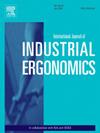培养弹性安全文化,提高年轻建筑工人的安全绩效:经验和模拟研究的启示
IF 3
2区 工程技术
Q2 ENGINEERING, INDUSTRIAL
International Journal of Industrial Ergonomics
Pub Date : 2025-01-01
DOI:10.1016/j.ergon.2024.103687
引用次数: 0
摘要
建筑行业频繁发生的工伤事故凸显了提高工人安全绩效(SP)的重要性,尤其是对遭受工伤较多的年轻工人(即千禧一代和 Z 世代)而言。本研究借鉴社会学习理论和工作需求-资源理论,试图揭示建筑组织的弹性安全文化(RSC)如何提高青年工人的安全绩效。本研究采用混合研究设计,将 "自上而下 "的实证研究与 "自下而上 "的代理建模(ABM)模拟实验相结合。首先,研究人员建立了一个中介模型,将工作设计作为中介因素,而将上司支持和同事支持作为边界条件。利用来自中国建筑项目的 218 个青工样本,通过结构方程建模法对所提出的理论模型进行了验证。在实证结果的基础上,还进行了一个 ABM 实验,以动态展示青工的 SP 涌现过程。实证结果证实,RSC 显著增强了青年女工的 SP,而工作雕琢是这一联系的中介。研究发现,上司的支持放大了 RSC 对青年妇女工作设计的积极影响,进一步增强了青年妇女的工作设计,而同事的支持则起到了相反的调节作用。此外,ABM 实验的结果以动态的方式进一步证实了实证研究的横截面结论。本研究强调了 RSC 作为提高建筑工作场所生产率、健康和安全的有效方法的潜力,从而推进了 RSC 在广泛的工业和职业工效学领域的研究。此外,它还就如何利用 RSC 改善青年工人的 SP,从而有效减少与人为因素相关的事故提供了宝贵的实用见解。本文章由计算机程序翻译,如有差异,请以英文原文为准。
Fostering resilient safety culture to boost safety performance of young construction workers: Insights from empirical and simulation studies
Frequent occupational accidents in the construction industry highlight the significance of improving workers' safety performance (SP), particularly among young workers (YWs, i.e., Millennials and Generation Z), who suffer more occupational injuries. Drawing on the social learning theory and job demands-resources theory, this study attempts to uncover how the resilient safety culture (RSC) of construction organizations boosts the SP of YWs. A mixed research design, combining the “top-down” empirical study and the “bottom-up” agent-based modeling (ABM) simulation experiment was developed in this study. First, a moderated mediation model was developed wherein job crafting served as a mediator, while supervisor support and coworker support were considered as boundary conditions. Using 218 samples of YWs from construction projects in China, the proposed theoretical model was validated by the structural equation modeling approach. Based on the empirical results, an ABM experiment was subsequently conducted to dynamically exhibit the SP emergent process of YWs. The empirical results affirmed that RSC significantly enhanced the SP of YWs, and job crafting was a mediator between this link. Supervisor support was found to amplify the positive impact of RSC on YWs’ job crafting and further enhance their SP, while coworker support played the opposite moderating role. In addition, the results of ABM experiment further reinforced the cross-section findings of the empirical study with a dynamic picture. This study advances the RSC research in the broad industrial and occupational ergonomics field by emphasizing its potential as an effective approach to enhancing productivity, health, and safety in construction workplaces. Additionally, it offers valuable practical insights on how to leverage RSC to improve the SP of YWs, thus effectively reducing human factor-related accidents.
求助全文
通过发布文献求助,成功后即可免费获取论文全文。
去求助
来源期刊
CiteScore
6.40
自引率
12.90%
发文量
110
审稿时长
56 days
期刊介绍:
The journal publishes original contributions that add to our understanding of the role of humans in today systems and the interactions thereof with various system components. The journal typically covers the following areas: industrial and occupational ergonomics, design of systems, tools and equipment, human performance measurement and modeling, human productivity, humans in technologically complex systems, and safety. The focus of the articles includes basic theoretical advances, applications, case studies, new methodologies and procedures; and empirical studies.

 求助内容:
求助内容: 应助结果提醒方式:
应助结果提醒方式:


